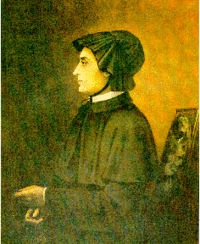Elizabeth Ann Seton
From Wikipedia, the free encyclopedia
(Redirected from Ann Seton)
| Saint Elizabeth Ann Seton, S.C. | |
|---|---|
 | |
| Widow, Foundress, and Educator | |
| Born | August 28, 1774 New York City |
| Died | January 4, 1821 (aged 46) Emmitsburg, Maryland |
Honored in
| Roman Catholic Church,Episcopal Church (United States) |
| Beatified | March 17, 1963, by Pope John XXIII |
| Canonized | September 14, 1975, by Pope Paul VI |
| Major shrine | National Shrine of St. Elizabeth Ann Seton, Emmitsburg, Maryland (where her remains are entombed); Shrine of St. Elizabeth Ann Bayley Seton at 9 State Street in New York City(site of her former residence) |
| Feast | January 4 |
| Patronage | Catholic Schools; Shreveport, Louisiana; and the State of Maryland |
Elizabeth Ann Bayley Seton, S.C., (August 28, 1774 – January 4, 1821) was the first native-born citizen[1] of the United States to be canonized by the Roman Catholic Church (September 14, 1975).[2] She established the first Catholic school in the nation, at Emmitsburg, Maryland, where she founded the first American congregation of religious sisters, the Sisters of Charity.
No comments:
Post a Comment